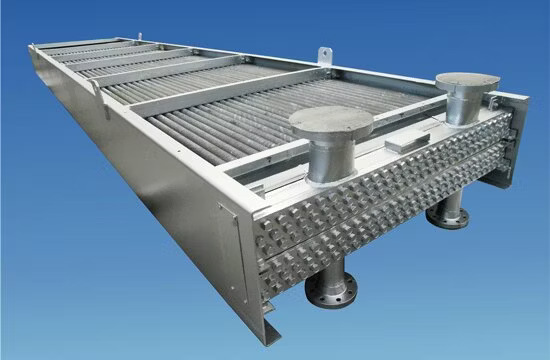Introduction
Scalable Air-Cooled Heat Exchanger offers a flexible and future-proof cooling solution that adapts to growing operational demands without requiring a complete system overhaul. Unlike conventional water-cooled heat exchangers, which depend on water availability and complex piping networks, ACHEs operate solely on ambient air, making them ideal for water-scarce regions and industries with sustainability goals. Scalability in air-cooled heat exchangers means that as an industry expands, cooling capacity can be enhanced by adding more modules or upgrading key components. This modular approach not only improves cost-efficiency but also reduces downtime, allowing businesses to adapt to increasing heat loads and evolving industrial requirements seamlessly. Industries such as power generation, petrochemicals, oil & gas, HVAC, food processing, pharmaceuticals, and data centers face fluctuating heat dissipation demands. Investing in a scalable air-cooled heat exchanger allows these industries to stay ahead of rising cooling requirements while ensuring optimal energy efficiency, minimal maintenance costs, and regulatory compliance. By integrating smart controls, advanced heat transfer materials, and IoT-based monitoring, ACHEs are now more intelligent, adaptable, and sustainable than ever before.
Key Features of Scalable Air-Cooled Exchanger
Modular Expansion
Scalable ACHEs are designed with a modular structure, allowing additional cooling modules or sections to be added incrementally. This ensures that as an industry’s cooling demands grow, they can increase capacity without replacing the entire system.
- Example: A petrochemical plant expanding its production can simply add more fan sections or finned tube bundles to enhance cooling performance.
- Benefit: Lower initial investment with the flexibility to scale up when needed.
Variable Speed Fan Control
Modern ACHEs integrate variable-speed fans, which adjust their RPM (Revolutions Per Minute) based on real-time heat load requirements.
- Example: In data centers, cooling loads fluctuate throughout the day; variable-speed fans ensure optimal cooling without excessive energy consumption.
- Benefit: Reduced energy costs and enhanced lifespan of mechanical components due to less wear and tear.
High-Efficiency Fin and Tube Designs
The effectiveness of an ACHE depends on the heat dissipation efficiency of its fin and tube configuration. Advanced designs maximize surface area, allowing for better heat transfer with minimal power usage.
- Example: Aluminum fins with enhanced surface area improve heat dissipation while maintaining a compact footprint.
- Benefit: Higher cooling efficiency per unit area, making them ideal for industries with space constraints.
IoT-Based Monitoring & Automation
Many modern ACHEs come equipped with smart sensors and IoT (Internet of Things) connectivity for real-time monitoring and predictive maintenance.
- Example: Oil refineries can use automated monitoring systems to detect fan performance issues before they escalate into major failures.
- Benefit: Minimized downtime, lower maintenance costs, and optimized performance with automated alerts and control adjustments.
Corrosion-Resistant Materials
To ensure longevity and reliability, scalable air-cooled heat exchangers use corrosion-resistant materials such as stainless steel, aluminum, and coated carbon steel.
- Example: In coastal regions where salt-laden air accelerates corrosion, anti-corrosive coatings protect heat exchanger tubes and fins from degradation.
- Benefit: Extended operational life, reducing frequent replacement costs and ensuring durability in harsh industrial environments.
Flexible Mounting & Placement
Scalable ACHEs are designed to be versatile in installation, allowing for horizontal, vertical, or rooftop placement depending on space availability.
- Example: HVAC systems in commercial buildings often place ACHEs on rooftops to maximize available space while ensuring efficient airflow.
- Benefit: Adaptability in space-constrained environments without compromising cooling performance.
Benefits of Scalable Air-Cooled Heat Exchanger
Future-Proofing Industrial Growth
A key advantage of scalable ACHEs is that they allow industries to expand operations without replacing entire cooling systems.
- Example: A power plant increasing its electricity output can upgrade its existing ACHEs rather than installing a completely new system.
- Benefit: Long-term cost savings and uninterrupted production efficiency.
Water Conservation
Unlike water-cooled systems, ACHEs eliminate water dependency, making them ideal for industries operating in arid regions or where water use is restricted.
- Example: Oil and gas refineries in deserts rely on air cooling systems to meet strict environmental regulations.
- Benefit: Lower environmental impact and operational costs associated with water procurement and treatment.
Energy Savings & Reduced Carbon Footprint
With variable-speed fans and advanced thermal designs, scalable ACHEs operate at optimal efficiency levels, significantly reducing electricity consumption.
- Example: Data centers adopting smart cooling technologies have reported 20-30% reductions in energy use.
- Benefit: Lower energy bills and compliance with carbon emission regulations.
Easy Maintenance & Lower Downtime
Since scalable ACHEs use modular components, maintenance teams can service individual sections without shutting down the entire system.
- Example: Petrochemical processing plants can clean or replace specific heat exchanger modules while other sections continue to operate.
- Benefit: Minimal disruptions to production processes and lower repair costs.
Environmental Compliance & Sustainability
Industries worldwide are under increasing pressure to reduce environmental impact. Scalable ACHEs help companies achieve green certifications and regulatory compliance.
- Example: Companies adopting air-cooled heat exchangers meet ESG (Environmental, Social, and Governance) goals by reducing water waste and emissions.
- Benefit: Sustainable growth and improved corporate reputation.
Conclusion
Scalable Air-Cooled Heat Exchanger is a game-changer, offering long-term flexibility, reduced operational costs, and environmental benefits. As industries grow and face stricter energy and environmental regulations, adopting scalable ACHEs ensures that cooling systems remain efficient, future-ready, and compliant with industry standards. By leveraging modular expansion, energy-efficient fan controls, corrosion-resistant materials, and smart monitoring systems, industries can enjoy continuous, uninterrupted cooling while optimizing resource utilization. The ability to scale up without significant reinstallation costs makes ACHEs a wise investment for companies looking to enhance performance without compromising sustainability goals. Moving forward, the integration of AI-driven automation, nanotechnology-based heat transfer materials, and next-gen energy-efficient designs will further improve scalability, performance, and environmental impact. Companies that prioritize scalable heat exchanger solutions today will position themselves as leaders in industrial efficiency and innovation tomorrow.

